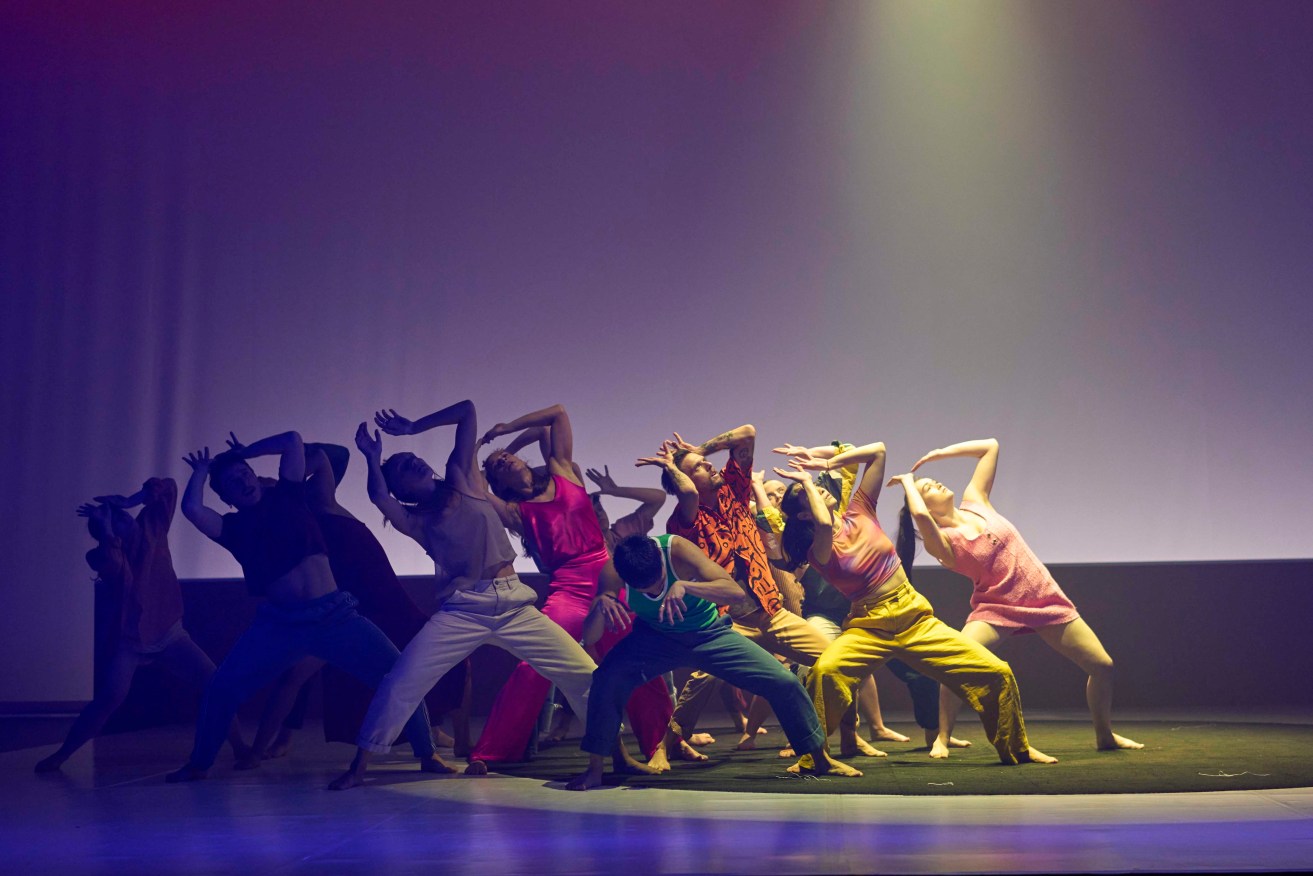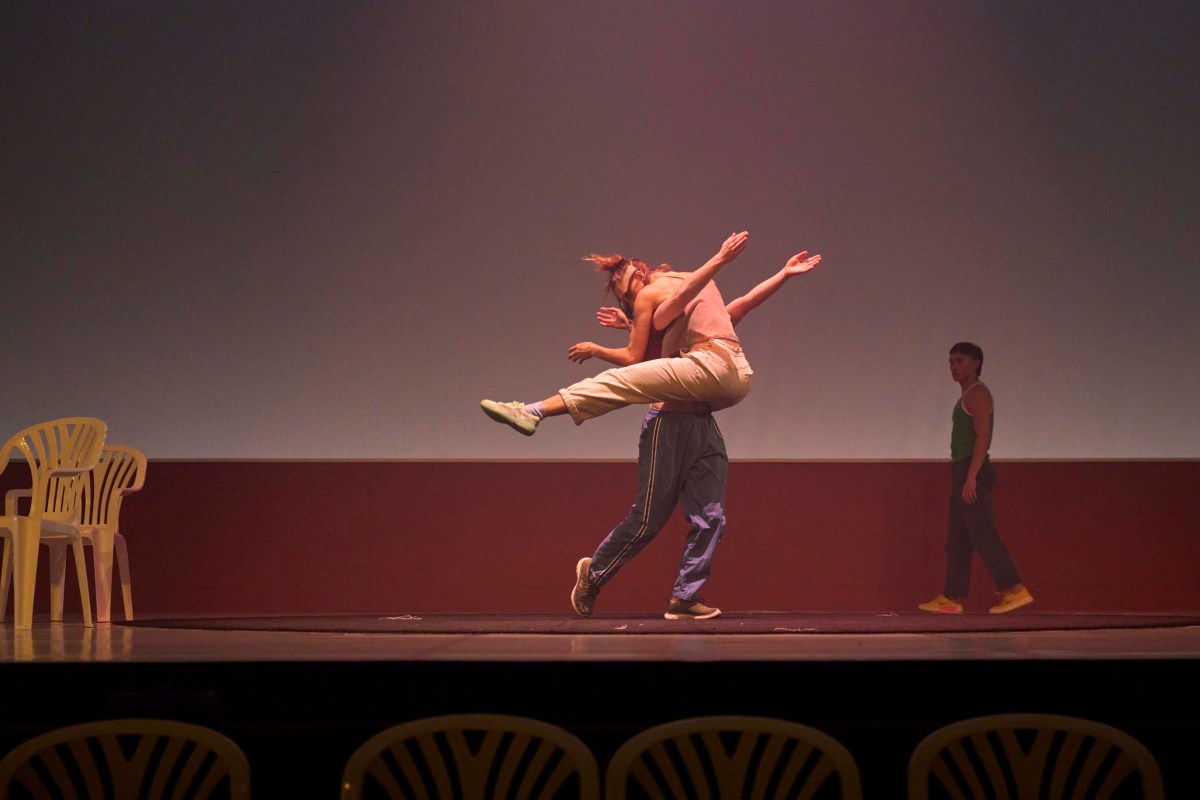Dance review: Australian Dance Theatre’s SAVAGE
In his first major work for Australian Dance Theatre, artistic director Daniel Riley detonates the truth bomb that is SAVAGE, blowing apart the systems of confusion and obfuscation that imprison us all.


The ADT ensemble in SAVAGE. Photo: Sam Roberts
To begin with, however, the view is deliberately impaired. We enter the theatre with dry ice blurring the air and rows of LED lights streaming across the proscenium arch, creating a scrim between audience and performer.
As we take our seats, the action is already happening on stage, as if tonight’s performance is not so much a one-off as something that continuously carries on around us. A single dancer moves fluidly about behind the lighting scrim, sometimes seated, drawing a hand in patterns across the floor, sometimes standing to watch the audience with an exacting stare, her movements so languid, so subtle, that we hardly notice her until we stop our chatter and watch.
The lights go out. When they come up again, the banks of LEDs are swung round into the audience like a door being flung open. What is revealed is the ingenious work of set designer and Worimi man, Dean Cross. Two woven wire fences, reminiscent of those used in prisons, detention centres and schools, are employed throughout the performance as backdrops and props. Sometimes they herd the dancers together in a confined space, sometimes they separate one from the group, sometimes they shove white plastic chairs towards the audience in a confronting row like advancing troops.
The chairs themselves serve many purposes, not least as a further evocation of government institutions. They are stacked in an ivory tower that one dancer climbs to look out at the audience. They are strewn obstructively about the stage, hindering the dancers’ movement. They are placed in a circle facing inwards. They are piled high in a mountain of shiny white plastic.
The dancers manoeuvre and interact with these props skilfully, all the more impressive considering nine of them are dance students from Flinders University. Riley recognises the importance of including the next generation in any project so that the learning that arises is carried into the future. His deft choreography melds the students’ movements with the more seasoned ADT dancers so that they become an almost seamless corp.
The lighting too, by designer Matthew Adey, continues to impress. An imposing grid of fluorescent strip lighting is raised and lowered, blazed and flickered to create the cold, detached atmosphere of institutional systems or the screaming madness these places can induce.
The music, composed by Jaadwa man James Howard, is equally fabulous. Addictive dance-club beats give way to edgy electronic soundscapes, overlaid with police sirens, jet planes, insidious whispering, and water dripping from a leaking gutter.
The dancers respond intimately to this visual and aural world, their movements as one with the fluctuating rhythms. A fist-fight duet is immaculately executed to a pulsing electronic backdrop, the slo-mo punches, swings and roughhouse tumbles every bit as elegant as classical ballet. A dancer in a suit performs a wonderful high-energy solo, melding aggressive posturing and power poses with John-Travolta-style disco moves and body-popping. In an ensemble piece, a lone dancer at the centre of a circle is approached by another dancer, then a second and a third, who try to make physical contact despite his attempts to throw them off. As more and more dancers join in, he eventually succumbs, allowing his eyes to be covered, his limbs immobilised.

Plastic chairs serve many purposes in ADT’s SAVAGE. Photo: Sam Roberts
Throughout the performance, the dancers occasionally pause to stare bluntly out into the audience. Their challenging gaze demands that we too stop, think, question. What are we told, what do we believe, and how much of it is real? Are we not all prisoners inside a system that fights to maintain itself at the expense of humanity and truth?
The finale leaves us with the image of a lone dancer bravely clearing a pathway through a mountain of stacked chairs. Others wait behind him, some moving closer as if to follow along the path he has made. It’s an image that reverberates with quiet power and a shimmering sense of hope.
As ADTs newly appointed artistic director, Riley is the only First Nations director of a non-First Nations arts company in Australia.
“People look to ADT in terms of what’s happening in contemporary dance in Australia, and we (can) lead that way,” says Riley.
Hopefully, his appointment is the first of many steps that will bring us closer to proper recognition and representation of First Nations knowledge and skill in arts companies throughout Australia. SAVAGE is testament to the strength and beauty that can arise as a result.
SAVAGE is showing at the Dunstan Playhouse, Kaurna Country, until Sun 25 Sept.




